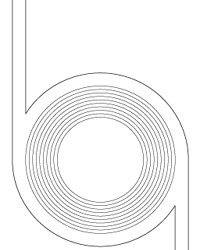#dowsing
Photo

Source details and larger version.
Responding to unseen influences: my collection of vintage dowsing rods and dowsers.
23 notes
·
View notes
Text
youtube
how do magic pendulums work? ✨ what do dowsers really believe about their practice? 🙏 is there evidence that cave men did drugs?? 🍄
all this and MORE in my latest video! will you join me, down the rabbit hole? 🐇
#magic pendulum#dowsing#dowsing history#magic#magick#esotericism#occult#occultism#witch#witchy#practitioner#witchcraft#witchraft#spell#history#history of magic#magic history#pendulum#pendulum magic#water witching#ancient aliens#dowsing practice#deep dive#rabbit hole#Youtube
8 notes
·
View notes
Text

When you're invited over for Dinner and Divinations but the host's weird rat won't get off of your sapling wand
#wizard#wizard tumblr#wizardposting#wizardblr#wizard shit#wizardblogging#wizard post#divination#dowsing#dinner and divinations are every thursday usually#and I'm not invited often <):>(>#probably because last time I cast polymorphy on their fish#and now its a weird rat
13 notes
·
View notes
Photo

Source and details.
30 notes
·
View notes
Text
HEY GUYS, CHEAP TAROT, PENDULUM & DOWSING ROD READINGS
Do you have a question that's burning you up inside? Do you wish you could just get a fuckin clue? Do you want advice or direction on something?
Then look no further. These readings are for you!
"But Lee, what the fuck is this. How does it work?"
Well my kind friend, it works like this.
You ask a question, I provide an answer. I've been doing divination for a couple years now. Pendulum and dowsing rods are my specialty, and I'm no stranger to tarot. Now, I am not as seasoned as other people, I do admit. But so far I've had quite good reviews on the readings I've done, and I'm not charging any professional prices, either.
~Rates~
Tarot is a 3 card pull. Tarot provides much broader answers. Great for vague questions or ones that require a lengthy answer. Tarot is 5$
Dowsing rods and Pendulums are much more straight-forward for yes/no/maybe questions. If you have a complex question, I can ask multiple questions to build a sufficient answer for your question. It's 2$ per initial question, 1$ for each subsequent related question for these.
I use Venmo and Cashapp!
Just send me a message and we'll go from there! 😊
#witchcraft#witchblr#witch#witches#witch tips#tarot reading#tarot#pendulum#pendulum readings#dowsing rods#dowsing#dowsing rod readings#cheap divination#divination#card divination#tarot requests#tarot reader#heathen#norse pagan#pagan#paganism#cheap readings
9 notes
·
View notes
Text
WHY DIDN'T Y'ALL TELL ME I WOULD GET SASSED BY A ROCK
Been dowsing lately, look I get enough sass from my tarot cards. Now I gotta deal with sass from my pendulum?
I've been studying for an entire week, barely any breaks and today it went like:
Me: Should I continue to study after lunch?
Pendulum: No
Me: Should I use today to-
Pendulum: swining wildly before i finish the fucking question YES
Me: .... are you sassing me?
Pendulum: Yes
WELL FUCK ME. I was gonna ask if I should use the rest of the day to take care of myself but I didn't even get to finish my question! Never saw it swing so quickly. I'm mad. I got sassed by a rock. D:<
#witchythings#baby witch#catholic witch#christian witch#witchblr#witchcraft#christopagan#witches#witch#beginner witch#dowsing#divination#pendulum#i got enough from the cards#now i gotta deal with a rock too!!!!
123 notes
·
View notes
Text
From when I tried doing drawtober last year and failed miserably



#drawtober#angel#clown#bird cage#chains#dowsing#circus#art#original illustration#original art#luketaart#brart#brazilian artists
33 notes
·
View notes
Photo


MY ETSY SHOP IS NOW ONLINE!
I’m heading into the New Year by offering two long distance healings on Etsy. If you’d like to learn more, feel free to drop me a message. I’m also open for more in-depth, personalized healing sessions, all of which can be done via phone or Zoom. Watch this space and my Etsy for other products and always feel free to message me if you have any questions.
Love and light!
#energy healing#chakra healing#reiki#dowsing#medicinal dowsing#long distance healing#remote healing#complimentary healing arts
26 notes
·
View notes
Text

#dowsing#it’s still pretty terrible#alternative emo#diy emo#emo#emo punk#midwest emo#emo pop#pop punk#post hardcore#indie rock#music poll#poll#musicblr#rate your music
3 notes
·
View notes
Text

'Dowsing instructions'. J. G. Zeidler and Christian Thomasius. 1700.
29 notes
·
View notes
Text

a ferret; ink and watercolor
last seven day’s listening:
rvivr - the beauty between
b. dolan - house of bees vol 2
ss decontrol - the kids will have their say
on being an angel - playin it cool
dowsing - no one said this would be easy
they might be giants - dial-a-song direct
me first and the gimme gimmes - blow in the wind
the clash - sandinista

#drawing#painting#recordoftheday#records#watercolor#watercolorpainting#art#ferret#ferrets#ferret art#the clash#me first and the gimme gimmes#they might be giants#tmbg#dowsing#on being an angel#ss decontrol#ssd#b dolan#b. dolan#rvivr#this is my painting
4 notes
·
View notes
Photo

Source details and larger version.
Responding to unseen influences: my collection of vintage dowsing rods and dowsers.
28 notes
·
View notes
Audio
Listen/purchase: Being Real by Dowsing
3 notes
·
View notes
Text
looking for words like "necromancy" to describe specific specialized types of magic?
look no further
#writing#necromancer#necromancy#astrology#tarotmancy#chronomancy#cleromancy#clairvoyant#cryomany#scrying#crystal ball#dowsing#divining#floriography#horoscope#horoscopy#numerology#oculomancy#occlumency#ouija#papyromancy#pyromancy#cheiromancy#pyromancer#cryomancer#taromancy#magic#witches#writblr#wizards
7 notes
·
View notes
Text
By: David Randall
Published: Oct 3, 2023
In the Wall Street Journal, Mahzarin Banaji and Frank Dobbin recently published “Why DEI Training Doesn’t Work—and How to Fix It,” a defense of implicit-bias research in the guise of a critique of current corporate diversity, equity, and inclusion trainings. Banaji is one of the two inventors of the concept of implicit bias, and of the related implicit association test (IAT). She and Dobbin hope to acknowledge the flaws of DEI trainings while preserving implicit-bias research—and the associated program of political activism. The authors lament that DEI trainings elicit shame in their subjects, and that they are largely being used to bolster workforce-management policies against possible litigation. Their problem with DEI trainings is not that they are discriminatory, but that they do not strike the right tone:
Reminding managers that they can use these tools to suss out problems and nip them in the bud helps them to feel capable of managing biases and microaggressions. When managers use these skills, they retain women and people of color for long enough to come up for promotion. . . . training isn’t designed to blame people for their moral failings. Instead, it’s galvanizing them to support organizational change by arming them with knowledge.
The problems with DEI trainings are not in their tone, however, but in their substance. The implicit-bias theory (also called unconscious-bias theory) on which these trainings are based has no scientific basis, as years of examinations have consistently demonstrated. Lee Jussim puts it politely in his “12 Reasons to Be Skeptical of Common Claims About Implicit Bias,” but the Open Science Foundation’s archive of Articles Critical of the IAT and Implicit Bias renders a harsher verdict. In 2011, Etienne LeBel and Sampo Paunonen reviewed evidence that measures of implicit bias possess low reliability. In other words, when you test for implicit bias multiple times, you rarely get the same result. Their conclusion was that some part of “implicit bias” is really “random measurement error.” In 2017, Heather Mac Donald’s intensive examination of the theory and its empirical basis (or lack thereof) concluded that the “implicit-bias crusade is agenda-driven social science.” And Bertram Gawronski’s 2019 review of the scholarly literature on implicit-bias research also concludes that there’s no proof that people aren’t self-aware enough to know what’s causing their supposedly “implicit” or “unconscious” biases; and that you can’t prove that there’s any relationship between how people do on the test and how they behave in the real world.
As far back as 2009, Hart Blanton and colleagues reexamined research data on implicit bias. They found that 70 percent of whites who supposedly displayed implicit bias against blacks actually discriminated in favor of blacks.
It’s not just that there’s “insufficient evidence” that implicit bias doesn’t matter. There’s even evidence of a negative correlation between “implicit bias” and actual behavior. So we shouldn’t just be “skeptical” of implicit-bias theory. We should scoff at it.
In 2023, Jason Chin and colleagues noted that the entire field of behavioral-priming research has been largely discredited, which, in turn, eviscerates the basic framework justifying the argument that implicit-bias training reduces prejudicial behavior. As for the implicit-attitude test, Edouard Machery’s scathing 2022 article concludes: “We do not know what indirect measures measure; indirect measures are unreliable at the individual level, and people’s scores vary from occasion to occasion; indirect measures predict behavior poorly, and we do not know in which contexts they could be more predictive.”
Banaji and Dobbin’s article also fails to reveal how crucial implicit-bias theory has been in support of the legal imposition of such trainings, whether labeled as DEI or not. Since 2007, the Equal Employment Opportunity Commission has “encouraged” employers to adopt diversity trainings preemptively to protect themselves against legal liability for “unconscious bias.” In government, the trainings have been imposed by presidential executive order, the Centers for Disease Control and Prevention, the Department of Education, the Department of Justice, the Office of Science and Technology Policy and Office of Personnel Management, the State Department, and the states of California, Illinois, Maryland, Massachusetts, Michigan, Minnesota, New Hampshire, New Jersey, New York, San Francisco, and Washington.
Moreover, “implicit bias” is an essential tool by which progressive activists have worked around federal antidiscrimination law’s requirement of proof of discriminatory intent. The implicit-bias standard allows lawyers to seize on the law stating that a “hostile environment” is an actionable offense under antidiscrimination law. Implicit-bias doctrine allows any inequity to be treated as evidence of bias, and hence of a hostile environment. Implicit-bias theory is the prerequisite for dispensing with intent in anti-discrimination law.
It would be hard to establish in a court of law whether instilling shame was the goal or just a byproduct of DEI trainings. It would be desirable if the DEI advocates could produce trainings that did not have that effect. But Banaji and Dobbin ultimately oppose eliciting shame not primarily because it is wrong but because it will hamper the political activism they favor.
Professional critiques of implicit bias have shown, politely but repeatedly, that there is nothing there. Activists and scientists who think that science should serve political objectives want to believe in the existence of massive systemic bias to justify their goals of imposing “equity” by law and by litigation. Implicit bias is a pseudoscientific theory made to order for this purpose. It’s a house of cards, and governments and the private sector should terminate every program based on it.
==
Call it "Grievance Dowsing."
https://en.wikipedia.org/wiki/Dowsing
Dowsing is a type of divination employed in attempts to locate ground water, buried metals or ores, gemstones, oil, claimed radiations (radiesthesia), gravesites, malign "earth vibrations" and many other objects and materials without the use of a scientific apparatus. It is also known as divining (especially in water divining), doodlebugging (particularly in the United States, in searching for petroleum or treasure) or (when searching for water) water finding, or water witching (in the United States).
A Y-shaped twig or rod, or two L-shaped ones—individually called a dowsing rod, divining rod, vining rod, or witching rod—are sometimes used during dowsing, although some dowsers use other equipment or no equipment at all. The motion of such dowsing devices is generally attributed to the ideomotor phenomenon, a psychological response where a subject makes motions unconsciously. Put simply, dowsing rods respond to the user's accidental or involuntary movements.
The scientific evidence shows that dowsing is no more effective than random chance. It is therefore regarded as a pseudoscience.
#David Randall#implicit bias#implicit association#unconscious bias#phenology#discrimination#anti discrimination#systemic bias#pseudoscience#junk science#dowsing#grievance dowsing#religion is a mental illness
5 notes
·
View notes
Text
Psycho-inductor

This device is used to induce harmony between a person and the goal of an action, a positive idea, a message of love, the energies of a battery, of a color… or between two people. Here is an ingenious graph of reception and transmission of magnetic signals which is capable of giving you new cosmo-biological energies thanks to its beneficial action on your active psyche. This active psyche is the totality of what we call it open-mindedness or, in other words, curiosity, the creator of a person. The induction principle of this graph is represented by the large spiral emerging from the two opposite arrows. The transmitter finds the power and quality of your broadcast in the 10 concentric circles which, radionically speaking, are in relation to all mental and spiritual energies of all phenomena existing.
This makes it possible to obtain an agreement (a tuning) between any idea and any thing existing in the Universe. By example, by means of a color whose witness will be placed at the center, it is possible to bring into harmony an artist and the goal next: better creativity; a student and a goal: better concentration for exams; a tired person and a goal: greater vitality.
Please note, before using it, it is essential to orient this graph towards magnetic north. Equip yourself with a compass to determine this orientation. here's how proceed:
1) lay the graph flat on a table;
2) put it down compass on the top arrow;
3) release the compass needle which on its own will change direction and which, when it is stabilized, will infallibly indicate magnetic north; using both hands, then slowly rotate the graphic until the arrow on which the compass rests indicates the same direction as the magnetic needle of the compass;
4) wait again for the compass needle is stabilized to, if necessary, proceed the last small corrections so that the arrow is perfectly in the extension of the magnetic needle of the compass.
There you go, this doesn't get any more difficult than that!
Then place the subject's indicator on the arrow pointing north magnetic, while the formula describing the goal to be achieved must be placed on the arrow indicating the opposite direction. This formula describing the goal to be achieved must be written clearly and legibly, in black ink, on a small square of white bristol paper. As soon as everything is in place, induction begins and it is immediately amplified and energized by the presence of the 10 concentric circles. If you want to get more action specifies again, it is enough to place the object (or its witness) allowing to obtain this additional precision at the center of the circles concentric. These objects are as numerous as they are diverse.
2 notes
·
View notes